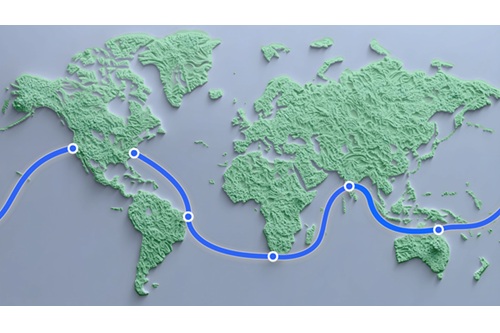Asia’s Seabed Is a Hotbed of Cable-Laying Activity
 By Ian Scales, TelecomTV
By Ian Scales, TelecomTV
September 18, 2024
Ever-increasing data and video traffic volumes are driving demand for more subsea network capacity
New submarine cables are being deployed around the world
Multiple new projects are underway or nearing completion across the Asia Pacific region
After its initial boom and bust at the turn of the 21st century, the global submarine cable-laying industry has settled down to a less irrationally exuberant period of steady growth and much of the activity driving the market is happening in Asia Pacific waters.
There are currently more than 530 submarine communications cables in service across the world and another 77 in the planning stage, taking the total to more than 600, according to Telegeography. And that number continues to grow as more and more data and video traffic traverses the world, fuelled by the ever-increasing number of connected people and devices, ongoing datacentre construction and the data traffic volume surge being generated by the development and use of AI applications.
That traffic is highly dependent on subsea networks: According to Grand View Research, around 97% of worldwide internet traffic is dependent on submarine cables.
To cope with demand, more submarine cables are being built around the world. Among the recent announcements of new network construction in the Asia Pacific region is one from the Bangladesh Private Cable System (BPCS) consortium, which says it’s starting work on the country’s first privately owned subsea cable linking Bangladesh to the UMO subsea cable, which runs from Thanlyin, Myanmar to Tuas, Singapore.
Meanwhile the South-east Asia Hainan-Hong Kong Express (SEA-H2X) subsea backbone linking Hong Kong, China, Thailand, Malaysia, the Philippines (La Union) and Singapore has finally reached its landing point in the Philippines, PT Telekomunikasi Indonesia International (Telin) and BW Digital announced a partnership to develop and construct the Nongsa-Changi submarine cable system linking Batam and Singapore, and there many more projects currently on the drawing board or already underway.
So much for the instinctive idea that major bodies of water represent a communications barrier. In reality the opposite has often proved to be true, with seas and oceans enabling, rather than inhibiting, trade and contact between otherwise isolated populations. So much so that where the available navigable water was inadequate, people built harbours, dredged rivers and dug canals. “Whatever floats your boat,” could have been their motto.
news via inbox
Sign up to get the latest updates straight to your inbox!
 By Ian Scales, TelecomTV
By Ian Scales, TelecomTV



